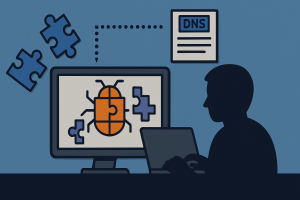 When someone searches for your business, Google shows them everything—your name, your hours, your map location, and, maybe most importantly, your reviews. Those little yellow stars carry real weight. One bad review can plant a seed of doubt. A string of five-star ratings can tip a visitor into becoming a customer. People trust what other people say. And Google, for better or worse, has become the place where those opinions live.
When someone searches for your business, Google shows them everything—your name, your hours, your map location, and, maybe most importantly, your reviews. Those little yellow stars carry real weight. One bad review can plant a seed of doubt. A string of five-star ratings can tip a visitor into becoming a customer. People trust what other people say. And Google, for better or worse, has become the place where those opinions live.
The problem isn’t with the reviews themselves. It’s with how little control you have over them once they’re out in the wild. You can respond to a bad review. You can thank someone for a glowing one. But when it comes time to showcase your hard-earned reputation on your own website, Google gives you almost nothing to work with. [Read more…]
 A startup called Farnsworth & Co. has found a niche in the dark overlap between surveillance, malware, and civil litigation. Their product? Personal data stolen from infected computers—now available for purchase by debt collectors, divorce lawyers, and anyone with a grudge and a budget.
A startup called Farnsworth & Co. has found a niche in the dark overlap between surveillance, malware, and civil litigation. Their product? Personal data stolen from infected computers—now available for purchase by debt collectors, divorce lawyers, and anyone with a grudge and a budget. A new cybersecurity threat is emerging as attackers use DNS records—the very system that directs internet traffic—to hide malware. Instead of relying on email attachments or suspicious downloads,
A new cybersecurity threat is emerging as attackers use DNS records—the very system that directs internet traffic—to hide malware. Instead of relying on email attachments or suspicious downloads,  If you use an Android phone, there’s a good chance Google’s Gemini AI is now interacting with your apps, even if you thought you had disabled it. The company recently rolled out changes that grant Gemini new levels of access to messages, phone calls, and third-party apps like WhatsApp, regardless of whether users had previously opted out. If that sounds invasive, it’s because it is.
If you use an Android phone, there’s a good chance Google’s Gemini AI is now interacting with your apps, even if you thought you had disabled it. The company recently rolled out changes that grant Gemini new levels of access to messages, phone calls, and third-party apps like WhatsApp, regardless of whether users had previously opted out. If that sounds invasive, it’s because it is. You click a link. It takes you to a site that looks exactly right. The logo matches, the name checks out, and everything feels familiar. But something’s off. And before you realize what it is, you’ve handed over your login, your credit card, or worse, your network credentials. The trick wasn’t in the layout or the content. It was in the letters.
You click a link. It takes you to a site that looks exactly right. The logo matches, the name checks out, and everything feels familiar. But something’s off. And before you realize what it is, you’ve handed over your login, your credit card, or worse, your network credentials. The trick wasn’t in the layout or the content. It was in the letters.